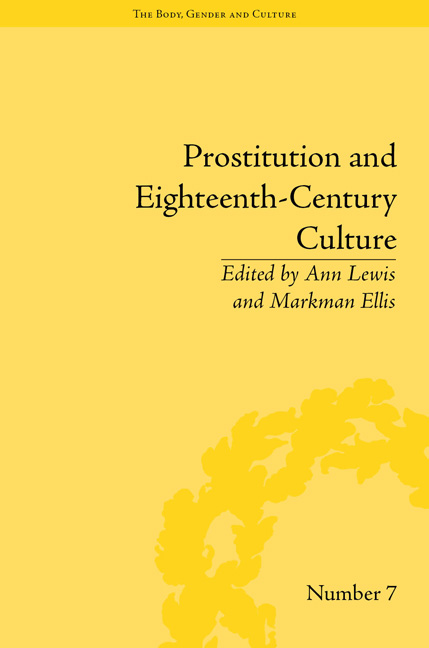Book contents
- Frontmatter
- CONTENTS
- Acknowledgements
- List of Contributors
- List of Figures and Tables
- Introduction: Venal Bodies – Prostitutes and Eighteenth-Century Culture
- Part I (Auto)Biographical and Classificatory Fictions: Madams, Courtesans, Whores
- Part II Visibility and Theatricality: Fiction, Image and Performance
- Part III The Magdalen House: Marriage, Motherhood, Social Reintegration
- Part IV Wider Perspectives: Constructing the Prostitute in Social History
- 12 Making a Living by ‘Indecency’: Life Stories of Prostitutes in Christiania, Norway
- 13 Male Prostitution and the Emergence of the Modern Sexual System: Eighteenth-Century London
- Notes
- Index
12 - Making a Living by ‘Indecency’: Life Stories of Prostitutes in Christiania, Norway
from Part IV - Wider Perspectives: Constructing the Prostitute in Social History
- Frontmatter
- CONTENTS
- Acknowledgements
- List of Contributors
- List of Figures and Tables
- Introduction: Venal Bodies – Prostitutes and Eighteenth-Century Culture
- Part I (Auto)Biographical and Classificatory Fictions: Madams, Courtesans, Whores
- Part II Visibility and Theatricality: Fiction, Image and Performance
- Part III The Magdalen House: Marriage, Motherhood, Social Reintegration
- Part IV Wider Perspectives: Constructing the Prostitute in Social History
- 12 Making a Living by ‘Indecency’: Life Stories of Prostitutes in Christiania, Norway
- 13 Male Prostitution and the Emergence of the Modern Sexual System: Eighteenth-Century London
- Notes
- Index
Summary
Almost without fear, both inside and outside the city, and often in a disgraceful state of intoxication, they ran into people's arms, and, known to all, shamelessly offered themselves for sale.
(Verdict from the Christiania House of Correction Court sentencing Elen Trulsdatter to the house of correction, 1796)
The two sisters Elen and Anne Magrethe Trulsdatter were publicly visible prostitutes in Christiania in the 1790s. Between 1792 and 1799 they were each incarcerated in the correctional institution Christiania tukthus four times, sentenced for vagrancy and indecency, as well as theft. In addition, they were arrested and interrogated at the police station on several occasions, and were repeatedly observed and arrested by the city's watchmen or police officers on street corners in the city, in cemeteries, in enclosures and hills in the poor suburbs of the city, as well as at the quay and on ships anchored in the harbour. The main charge brought against them was vagrancy, but underlying these accusations were assumptions that the women were making a living by ‘indecency’, which suggested street prostitution. The repeated interrogations of the two sisters make it possible to paint a social portrait of prostitutes within a microhistoric scope. Historical accounts of prostitution in Norway have largely focused on the controlled and de facto legalized prostitution in the nineteenth century.
- Type
- Chapter
- Information
- Prostitution and Eighteenth-Century CultureSex, Commerce and Morality, pp. 171 - 184Publisher: Pickering & ChattoFirst published in: 2014



